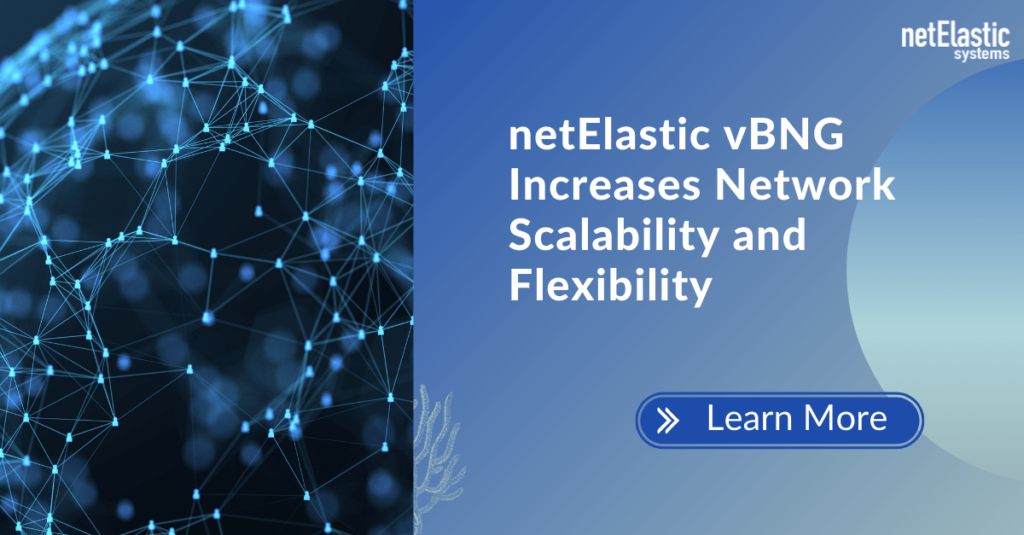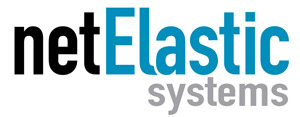Interested in finding a better way to add network capacity to keep up with bandwidth demand? But not wanting to incur major costs? Based on our conversations with internet service providers worldwide, you’re not alone. More and more ISPs are trying to solve this problem. As a result, it’s not surprising that the number of ISPs purchasing virtual Broadband Network Gateways (vBNGs) has been rapidly increasing.
We talked to netElastic’s networking experts about the six most-asked questions they receive from broadband providers interested in vBNGs. Below are answers to those questions you also may be wondering about.
1. Why do I need a vBNG if I manually configure each subscriber connection in my network?
Automating subscriber provisioning is important to scale your network efficiently. Manually configuring a few customers a day may seem doable. However, automation is critical if a broadband provider hopes to grow faster and have consistency across new customer adds, and error-free re-provisioning when things change.
A BNG provides subscriber management automation to improve consistency, simplify operations, and simplify integrating the network into your billing system for even more automation (auto sign-up, auto disconnect, auto rate plan changes, etc.)
2. I have traditionally used Cisco or Juniper routers. Why should I care about vBNGs?
Cisco and Juniper manufacture excellent routers. While they’re known for good products, they’re also known for high costs. Another drawback is flexibility. Physical network infrastructure, especially hardware routers that require manual configurations, hasn’t been able to keep pace with the demand for more bandwidth. As a result, many broadband providers over-provision their network with hardware-based routers to prepare for future capacity. Of course, this results in greater capital and operating costs.
As previously stated, vBNGs counter traditional network routers’ high costs and inflexibility by decoupling network functions from proprietary hardware appliances. With networking resources separated from the physical infrastructure, you don’t have to purchase additional hardware appliances whenever you need additional network capacity.
Broadband providers can quickly add network capacity with a few software commands instead of taking months to order, provision, and manually configure hardware routers. vBNGs enable service providers to expand their network capacity with as little disruption as possible.
Many former Juniper and Cisco customers are now using netElastic vBNG. Martin Pagano, CEO of Telpin, recently stated, “Replacing our Juniper MX gear with netElastic back in 2019 has been a great decision.”
3. How much does a vBNG cost?
netElastic vBNG is priced based on bandwidth capacity licenses, subscriber licenses, and an optional CGNAT feature license. As a result, the pricing is very flexible for various sizing needs. netElastic also offers subscription licensing options and perpetual/lifetime licensing.
A small 2x10G vBNG can start on a monthly subscription plan as low as $400. Larger solutions (including 100 Gbps options) tend to be in the tens of thousands of dollars. This is much cheaper than larger solutions with hardware-based routers, which can cost hundreds of thousands of dollars.
Regardless of the scale needed, netElastic vBNG delivers the flexibility service providers seek to manage their network growth more effectively. This flexibility also reduces Total Cost of Ownership (TCO) significantly.
According to Nigel Rayneau, CEO of Ufone, “The big router manufacturers required close to 1,000% more investment dollars for a single BNG (compared to netElastic) since we were expected to purchase a larger number of licenses up-front than we needed,”
4. Given the lack of flexibility with hardware-based routers, can I upgrade the vBNG as my needs change?
Yes, very easily. Assuming you have a server with available resources, additional interfaces can be added by license to increase the bandwidth capacity of the router. For example, a license for 2x 10G interfaces can be upgraded to a license supporting 4x 10G interfaces (doubling the router’s capacity).
If your bandwidth is fine but you need more subscriber licenses, it’s a simple license key upgrade. Martin Pagano of Telpin added, “netElastic has been 100% reliable, and upgrades to support our growth have been very easy and cost-effective.”
5. I would like redundancy with my vBNGs. Do I need to purchase a second license?
Yes, for the second router. However, you don’t need additional subscriber licenses (since the second router backs up the first one). And since netElastic vBNG supports N+1 redundancy, you only need one additional vBNG router, saving considerable money compared to 2N redundancy.
6. What kind of performance can I expect with a vBNG?
netElastic and Intel have been working together to maximize vBNG performance. Earlier this year, Intel tested netElastic vBNG on 4th generation Intel® Xeon® Scalable processors. The test results showed vBNG achieved up to 1 Tbps throughput per server, a new level of performance for vBNGs.
Want to learn more?
Please click here to ask a netElastic networking expert your questions about vBNGs.


